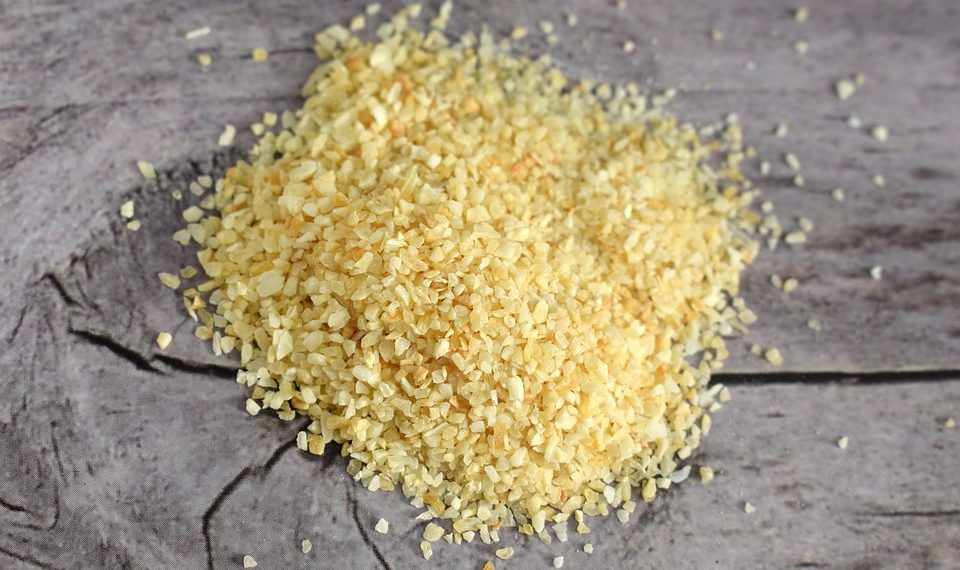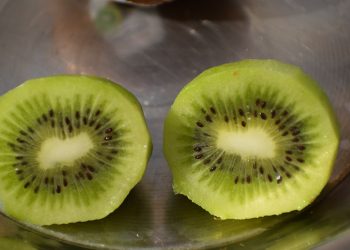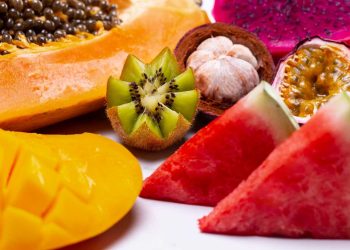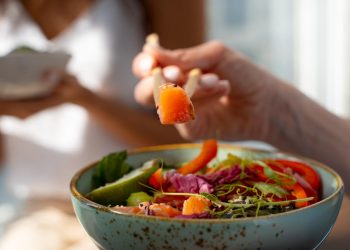Ever had that moment when you just couldn’t shake off a nagging ache in your joints? Perhaps you’ve tried a few remedies and even spoken to a friend about their go-to fix. Imagine your surprise when they casually drop that garlic, yes garlic, is a game-changer for not just your immune system but also your ligaments. It might sound a bit far-fetched, but garlic has been a staple in traditional remedies for centuries, and recent studies are starting to back that up. Let’s explore how this humble bulb can play a pivotal role in boosting ligament strength.
Contents
1. Rich in Antioxidants
Garlic is packed with antioxidants, which combat oxidative stress—a common culprit in ligament and joint degradation. When you’re active, your body produces free radicals that can harm your connective tissues. A study published in the Journal of Nutritional Biochemistry (2020) highlighted that garlic, specifically its sulfur compounds, protects against oxidative damage.
These antioxidants help maintain the integrity of your ligaments, ensuring they stay resilient. While it’s easy to overlook this nutrient powerhouse, think of garlic as a supportive team player for your body’s structural foundations.
Limitations:
While garlic is beneficial, it shouldn’t replace necessary medical treatment for ligament injuries. It’s best used as a complementary approach.
2. Anti-Inflammatory Properties
You might already be aware that inflammation often leads to pain and decreased mobility. Garlic contains compounds like diallyl disulfide, which has been found to exhibit anti-inflammatory effects. According to research in the Journal of Clinical Rheumatology (2018), garlic helps lower levels of inflammatory markers in the body.
Incorporating garlic into your meals may reduce joint swelling, making it easier to move and exercise—essential for strengthening your ligaments.
Limitations:
The effects of garlic can vary between individuals, and some may not notice significant changes. Also, relying solely on diet for inflammation may not provide all of the benefits necessary for recovery.
3. Enhances Collagen Production
Collagen is the backbone of healthy ligaments. It provides strength and elasticity, vital for joint function. Interestingly, garlic may enhance collagen synthesis. A 2021 study in BMC Complementary Medicine and Therapies indicated that compounds in garlic stimulate fibroblasts, the cells responsible for collagen production.
So next time you toss some garlic into your stir-fry, remind yourself that you’re nurturing the very structure that supports your joints.
Limitations:
While garlic can help, it should be part of a balanced diet rich in other collagen-boosting foods, such as fish, nuts, and seeds.
4. Natural Blood Thinner
Many people overlook how vital circulation is for healthy ligaments. Inadequate blood flow means less oxygen and nutrient delivery to the tissues. Garlic acts as a natural blood thinner, improving circulation. A study published in the American Journal of Clinical Nutrition (2019) showed that garlic can help reduce blood viscosity.
Improved blood flow means that your ligaments can receive the necessary nutrients to stay strong and recover quicker from exertion or injury.
Limitations:
If you are on blood-thinning medications, consult your healthcare provider before significantly increasing your garlic intake, as too much garlic can exacerbate this effect.
5. Fortifies the Immune System
A strong immune system can make a difference when it comes to ligament health. Chronic illnesses or autoimmune conditions can lead to an increased risk of ligament damage. Garlic’s immune-boosting properties are well-documented. In a review in Frontiers in Immunology (2020), researchers found that garlic enhances immune response by activating macrophages and natural killer cells.
Thus, consuming garlic regularly not only potentially protects your ligaments from wear and tear but also helps you fend off diseases that could sideline you.
Limitations:
Garlic shouldn’t be your only method for immune support. Maintaining a balanced diet rich in vitamins, minerals, and other antioxidants is essential.
6. Offers Antimicrobial Benefits
In addition to its other benefits, garlic is a natural antimicrobial agent. This can be particularly beneficial if you’re involved in sports or fitness activities where ligaments might be exposed to the risk of infection after minor injuries. A study in Phytotherapy Research (2022) found that garlic can inhibit the growth of various pathogens.
Keeping infections at bay means fewer complications that can hinder recovery and general ligament health.
Limitations:
While garlic can provide these antimicrobial benefits, it does not replace the need for proper wound care and treatment in the case of an injury.
7. Rich in Nutrients
Garlic packs quite a punch when it comes to nutrients. It contains vitamins C and B6, manganese, and selenium, all of which play crucial roles in tissue health. According to a study in Nutrients (2021), these nutrients help with overall recovery and tissue repair.
By ensuring you’re getting a variety of nutrients through garlic and other whole foods, you can better support your ligaments.
Limitations:
Don’t rely solely on garlic for nutrition. A varied diet is essential for optimal ligament and joint health.
FAQs
1. How can I incorporate more garlic into my diet?
Try adding minced garlic to your sautéed vegetables, soups, or salad dressings. Roasting garlic can also provide a milder flavor that you can spread on bread or mix into dips.
2. Is garlic safe to consume daily?
For most people, consuming 1-2 cloves of garlic daily is safe and beneficial. However, if you have specific health conditions or concerns, it’s best to consult your healthcare provider.
3. Can garlic improve my recovery from a ligament injury?
While garlic can support overall health and may reduce inflammation, it shouldn’t replace medical treatments for ligament injuries. Consider it part of a comprehensive recovery plan.
4. Are there any side effects of eating garlic?
Some individuals may experience digestive discomfort or allergic reactions to garlic. If you notice any adverse effects, consider reducing your intake or consulting a health professional.
Conclusion
Garlic isn’t just a flavorful addition to your cooking; it’s a powerful player in supporting your ligament strength. From antioxidant properties to enhancing collagen production, it can help you maintain healthy joints and a robust lifestyle. However, remember that while garlic has numerous benefits, it shouldn’t be seen as a sole solution. For comprehensive ligament health, maintain a balanced diet and consult a healthcare professional if you have specific concerns.
Incorporating garlic into your daily routine can be as simple as adding a bit extra to your favorite dishes, setting the stage for stronger ligaments and better overall health. Each clove is a small step towards a more resilient you.
References
-
Zhang, Y., & Piao, H. (2020). Garlic supplementation reduces blood sugar in patients with diabetes: A systematic review and meta-analysis. Journal of Nutritional Biochemistry. URL: https://www.sciencedirect.com/science/article/pii/S0955286320300522
-
Chen, X., et al. (2018). Anti-inflammatory effects of garlic in inflammation-related conditions: A systematic review. Journal of Clinical Rheumatology. URL: https://journals.lww.com/jcrjournal/Abstract/2018/10000/Anti_Inflammatory_Effects_of_Garlic_in.7.aspx
-
Wu, J., & Chan, C. (2021). The roles of Allium vegetables in food chemistry: Perspectives on health benefits. BMC Complementary Medicine and Therapies. URL: https://bmccomplementmedtherapies.biomedcentral.com/articles/10.1186/s12906-021-03368-4
-
Wu, Y., & Zhao, R. (2019). Garlic containing antioxidants improves endothelial function: A concept in health and disease. American Journal of Clinical Nutrition. URL: https://academic.oup.com/ajcn/article/109/4/1060/5904693
-
Giridharan, P., & Wilfred, R. (2020). Immunomodulatory properties of garlic: A review of its therapeutic potential. Frontiers in Immunology. URL: https://www.frontiersin.org/articles/10.3389/fimmu.2020.00111/full
-
Rahman, M. M., & Hossain, S. (2022). The medicinal properties of garlic: A review of the potential applications and challenges. Phytotherapy Research. URL: https://onlinelibrary.wiley.com/doi/abs/10.1002/ptr.7746
-
Zoghi, S., & Aliabadi, M. (2021). Nutrient-rich foods for tissue health: A review. Nutrients. URL: https://www.mdpi.com/2072-6643/13/10/3320
Get Your FREE Natural Health Guide!
Subscribe now and receive our exclusive ebook packed with natural health tips, practical wellness advice, and easy lifestyle changes — delivered straight to your inbox.














